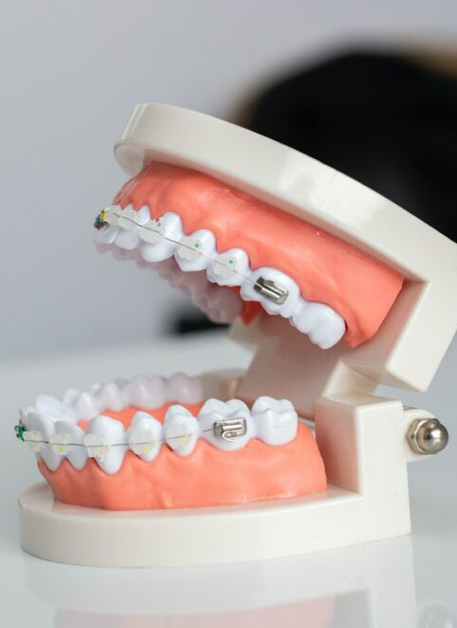- Call Now (905) 607-7721
Straightening teeth improves both their appearance and functionality. Biting pressure should be distributed evenly across your teeth to safeguard your gums, jaw joints, and teeth. Braces use pressure and force to move teeth. Conventional constituents include brackets, adhesive substance, arch wire, and ligature elastic, which is sometimes referred to as a “O-ring." The brackets and teeth move when the arch wire pushes on them. Rubber bands or springs may exert more force in one direction.
Over time, teeth are moved by the constant pressure of braces. After the tooth is loosened, new bone grows to support it. Bone remodeling is what this is. When bones are loaded, biomechanical mechanisms like bone remodeling strengthen them; when they are not, they weaken them. Bones are made by cells called osteoblasts and osteoclasts. The lining cells of the alveolar bone initiate direct bone resorption, whereas an excessive strain on the periodontal ligament triggers indirect or retrograde resorption. Bone deposition is another important factor in tooth mobility. Bone is deposited by distended periodontal ligaments. Teeth become looser and voids emerge distal to tooth movement in the absence of bone deposition. Contact Iris Dental Group right now for additional details on orthodontic procedures in Etobicoke.
It is essential that you continue to see your dental professionals for exams during your orthodontic treatment. You should also pay more attention to your mouth and teeth:
Make sure to clean your teeth properly each day, getting in between them if you can. Braces are delicate; therefore, you have to be extra careful while cleaning them to avoid breaking them. Your dental professionals will be able to show you the exact steps you need to do based on the device you are using. Cut down on the number of high-sugar meals and drinks you consume. Avoid sugar-filled meals, drinks, and fizzy beverages. Meals that are hard or sticky may potentially damage your brace. Brush your teeth just before bed and at least once throughout the day. Use mouthwash if required. Your dentist could advise using a stronger fluoride toothpaste or a mouthwash or gel that has more fluoride.

© Copyright Iris Dental Group All Rights Reserved. Developed by Tas Technologies